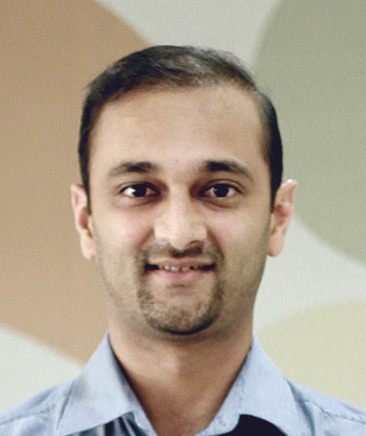Generative AI is moving from promise to practice, with clear applications across pharma’s omnichannel engagement. In fact, some generative AI-enabled solutions are already driving better pharma customer engagement outcomes and efficiencies.
FIGURE 1: Gen AI-enabled omnichannel solutions
We can identify different use cases based on gen AI’s strengths, whether in content generation, next best actions for field teams or as copilot for omnichannel operations.
While there’s strong promise, not surprisingly the industry has many questions about how gen AI can really work for content generation. Recently, content and commercial excellence leads across the top pharma companies have asked questions like:
- How do we move beyond content creation and make gen AI scalable in pharma?
- For mature brands with less frequent promotional cycles, what are the real use cases?
- Is gen AI just an efficiency play where I can reduce my content creation costs via automation or is it also an effectiveness play where I can create more personalized customer-facing content?
- Can I do this in a compliant way, both from an infrastructure security standpoint and internal processes from a medical-legal-regulatory (MLR) standpoint?
- How can I avoid “death by pilots” and create sustained impact?
All these questions pose relevant challenges. The good news is the answers depend on using the right approach to leverage gen AI in the content ecosystem.
Choosing the right approach for content hyperpersonalization
There is already a role in the intelligent content ecosystem for classical AI in tagging, content hyperpersonalization (CHP) and accelerated MLR approvals. Pharma customers—healthcare providers or patients—each have micropreferences for content assets. The content asset can be hyperpersonalized to these micropreferences and deployed for up to 40% better engagement rates on digital channels like emails, web and banner ads (deployed and measured across multiple pharma companies). A good place to start with this approach is by taking care of the foundations: defining the taxonomy of tagging to learn from history, developing an operating model to assemble and pre-approve content variants and piloting CHP to uncover opportunities.
Gen AI can create content, but what is the right approach to leveraging it in the pursuit of content hyperpersonalization? This article gave us a key insight and myth buster: “Generative AI won’t replace classical AI, it will make it better.” We can build on that and say: Gen AI will not replace humans (like the creative pharma marketer) or replace classical AI; it will make them better.
With that as a guiding principle, the right approach is to see gen AI through two lenses: augmentation and scale.
- Augmentation refers to the notion of “leveraging Gen AI for its strengths” (in addition to human inputs and classical AI) to augment existing solutions versus looking at gen AI to be “the solution.”
- Industrialization refers to leveraging an end-to-end solution as an intelligent content ecosystem that embeds AI (both classical and gen AI) and human inputs (brand creatives and strategies) with data pipelines. The solution would also connect digital asset management systems, CRM systems and marketing automation systems in a secure, compliant way.
FIGURE 2: Gen AI’s role in content transformation
The intelligent content ecosystem is geared toward making the steps in the content supply chain (Figure 2) more effective:
- It works seamlessly via a connected set of modules with pre-built AI algorithms supplied with historical engagement data and content assets.
- The “plug-and-play” pipelines, including data + AI + systems, have the desired user experience at distinct stages to take in human inputs and drive the right process (e.g., business insights for marketers and content creators or prioritized assets for content managers for accelerated approval).
- Pipelines encapsulate full data and content asset privacy while building effective content variants, getting them pre-approved (compliant) and deploying them dynamically via decision engines.
Augmenting with gen AI (for specific leverage points) has provided better results compared to classical AI only. From an AI standpoint, a combination of classical AI and gen AI play a role at all stages:
- Content tagging: The leverage point for gen AI is efficient parsing, and it has helped achieve 50% faster automated tagging of contextual tags like key messages (which require understanding the context of the whole asset) while we continue to use classical AI for derivative tags (e.g., brand mentions) and aesthetic tags (e.g., number of fonts). Hyperpersonalization depends on consistent tagging across thousands of assets and languages—work that used to take weeks of manual effort. Gen AI now accelerates this process by 50% while maintaining accuracy, freeing teams to focus on strategy instead of repetitive tasks.
- Content hyperpersonalization via variant generation: The leverage point for gen AI here is effective content generation. Classical AI provides hyperpersonalization insights on customizing a set of base assets into multiple tailored variant assets (of the base) which are generated via gen AI and deployed at an n=1 or persona level to drive up to 25% more engagement lift (40% to 50% rates from our work so far), when compared with classical AI-enabled CHP. A simplified example of an original base asset and gen AI-created variant is shown in Figure 3. As you may notice, the key message is the same, but there are other changes (which matter as well).
FIGURE 3: Multiple variants can accelerate new content creation
- MLR acceleration: Compliance remains the industry’s most scrutinized challenge, given that approvals can take 21 to 56 days, on average, for an asset to get approved and ready for deployment. ZS has been working with clients to accelerate content approvals via a tiered approval system, in which assets highly similar to already approved ones should be on an accelerated path. The process has started to drive the desired change (using NLP techniques for establishing similarity), albeit slowly because companies are on a journey of trust with AI prioritized assets for review. The key leverage point for gen AI is more effective similarity estimates. Gen AI has contextual parsing capabilities that augment current similarity scoring algorithms (which focus more on word and sentence similarity). Our estimate is gen AI-augmented similarity provides more accurate similarity by 33%, helping prioritize the right assets for accelerated approval with the necessary inputs. Figure 4 shows the contrast between traditional AI and gen AI-enabled similarity estimates.
FIGURE 4: Using gen AI to boost similarity estimates
Boosting both efficiency and effectiveness for content
Looking back on the frequently asked questions above, we now have answers:
Q: How can we make gen AI deployment ready and scalable?
A: Think about augmentation and industrialization. Looking at the full end-to-end ecosystem at the start including AI, tech and user experience for human inputs helps with deployment readiness and scaling.
Q: What is a practical gen AI use case?
A: Creating net-new content still requires significant human input. The most accessible use case today is variant generation, where gen AI can deliver measurable lift. Content variant generation is more accessible and requires relatively less change.
Q: Can gen AI be used in content just for efficiency or for effectiveness too?
A: Both. Gen AI makes the content ecosystem tasks efficient via automation and drives more effectiveness by creating personalized variant assets.
Q: Is gen AI secure and compliant?
A: Yes, it’s as secure as ongoing classical AI and tech systems. Gen AI also helps manage MLR compliance by identifying similar assets more effectively.
Q: Where do I start for sustained impact?
A: Start with proven use cases—tagging, variant generation and similarity scoring—where gen AI is already delivering accuracy and speed. From there, expand with confidence. Leading adopters have already started benefitting from gen AI, in addition to traditional AI, in the pharma content ecosystem. When integrating gen AI in your ecosystem, a good place to start is with focused use cases like tagging, variant generation and similarity scoring, where there is proven evidence of accuracy, versus trying for more unstructured use cases like net new content generation. Adopting the right use cases will help you realize the benefits of gen AI in the intelligent content ecosystem.
Learn more about Quill, our generative AI-driven content transformation application for pharma.
Add insights to your inbox
We’ll send you content you’ll want to read – and put to use.















